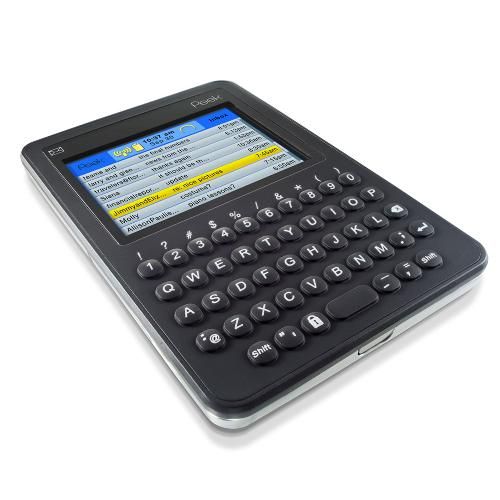Everyone has a 3G smartphone, iPhone or netbook these days, right? Wrong. Just 15% of people with a mobile phone currently use email on the move, inspiring US start-up Peek to launch this low-priced messenger for the masses.
Our quick take
Overall, the Peek is a nicely "diverged" product. If you just want email and text on the fly, it is a light, efficient and extremely easy alternative to a bulky, expensive smartphone. Is its colourful (grey, blue or red) design destined to become the "iPod of email"?
Probably not, at least while its service charge remains at its current level - several hundred dollars a year is a fair bit of change in difficult times for a text-only product. There are some pre-pay offers on the table, though, and it will be interesting to see the Peek’s pricing if and when it arrives in text-mad Britain.

Peek handheld email device - 3.0 / 5
| FOR | AGAINST |
|---|---|
|
|
Costing just $70 (£46) in the US, the metal Peek boasts a QWERTY keyboard, a 2.5-inch colour screen and an iPhone-shaming 10mm waistline.
For a $20 (£13.30) monthly fee (no contract required), Peek owners get all-you-can-type email and text messaging throughout the US over T-Mobile’s GPRS GSM network. (That might sound a lot to international users but is about the same as most US carriers charge for a basic data plan). What Peek users don’t get, however, is any kind of voice communications, a camera, MP3 player, office apps or games.
Peek’s aim is simple - to offer mobile email in minutes, without the hassle or complexity of normal handsets. And that, at least, it delivers. Peek’s back-end (actually virtual servers in Amazon’s new Elastic Computing cloud) already know the settings for the big webmail sites and thousands of ISPs across the globe, letting you simply type in your email address and password to start receiving mail. You can even download your contacts from webmail services.
For other addresses, such as POP3 mail (but not yet IMAP) through a personal domain, a 5 minute call to customer services to deliver SMTP settings was enough to get messages flowing. The interface is BlackBerry-esque, with a single inbox accessing up to three addresses. A right-mounted jog wheel lets you scroll (somewhat slowly) through emails and texts, open, forward and reply to them.
The keyboard uses blister-style keys for easy thumb tapping. It’s as good as a BlackBerry and much better, of course, than a touchphone or number pad. And that’s about it. The Peek does a fair job of displaying attached images on its 320 x 240-pixel QVGA screen but you can’t read text documents, PDFs or other files, or search your inbox. Battery life is fine, too, about 3 days in our tests.
It’s early days yet for the Peek. The company is promising unlimited instant messaging and push email for the New Year, although upgrading the Peek’s firmware will require sending the handsets back to the manufacturer. There are rumours of a possible UK launch (with a certain satsuma-coloured network) during 2009.
To recap
Overall, the Peek is a nicely "diverged" product. If you just want email and text on the fly, it is a light, efficient and extremely easy alternative to a bulky, expensive smartphone
